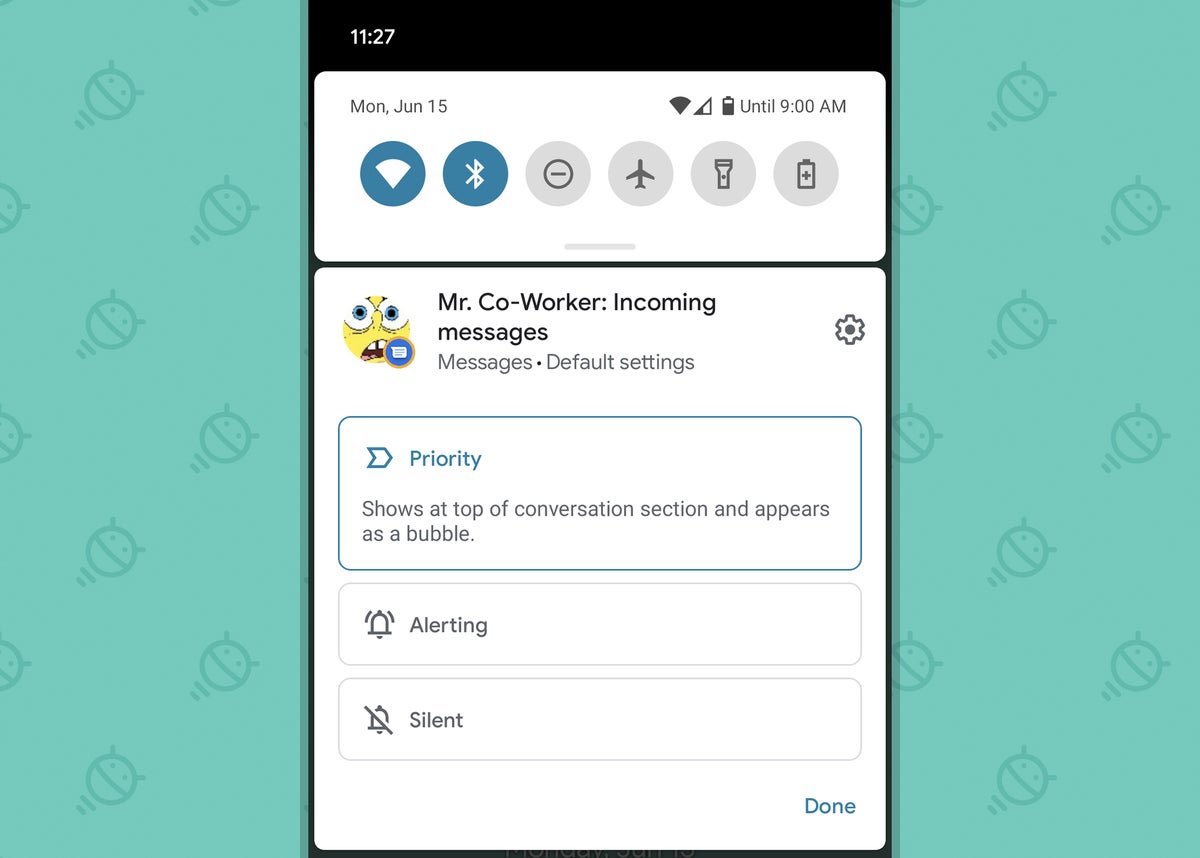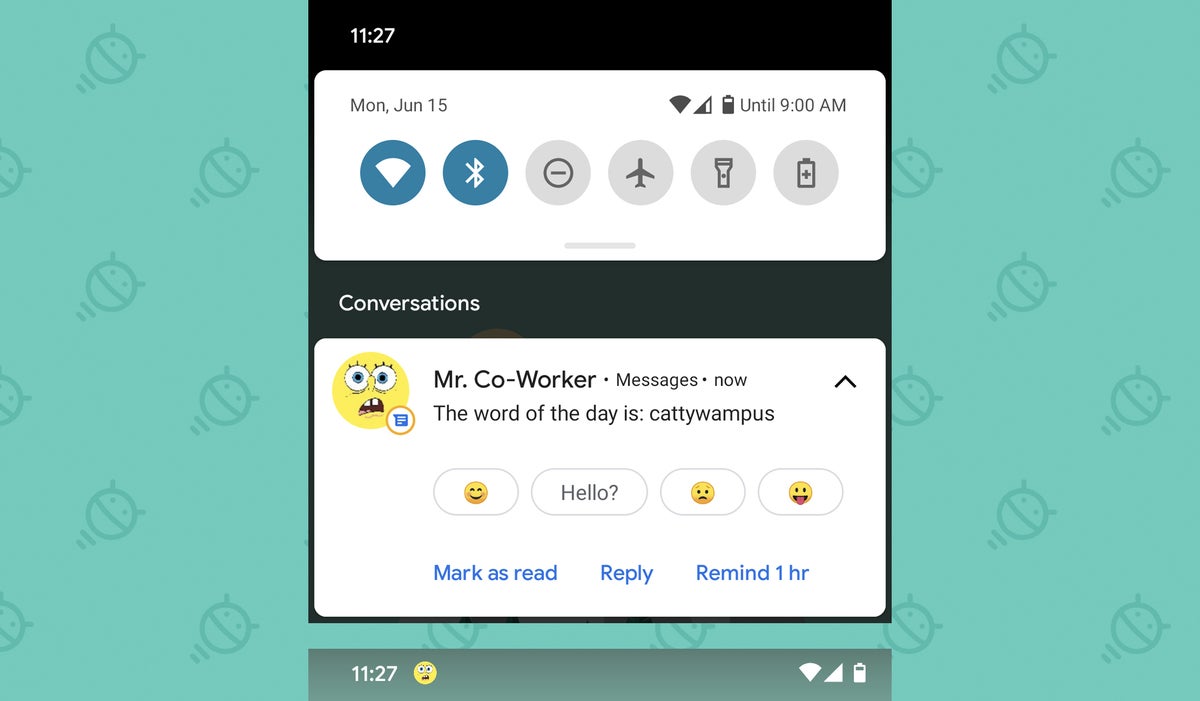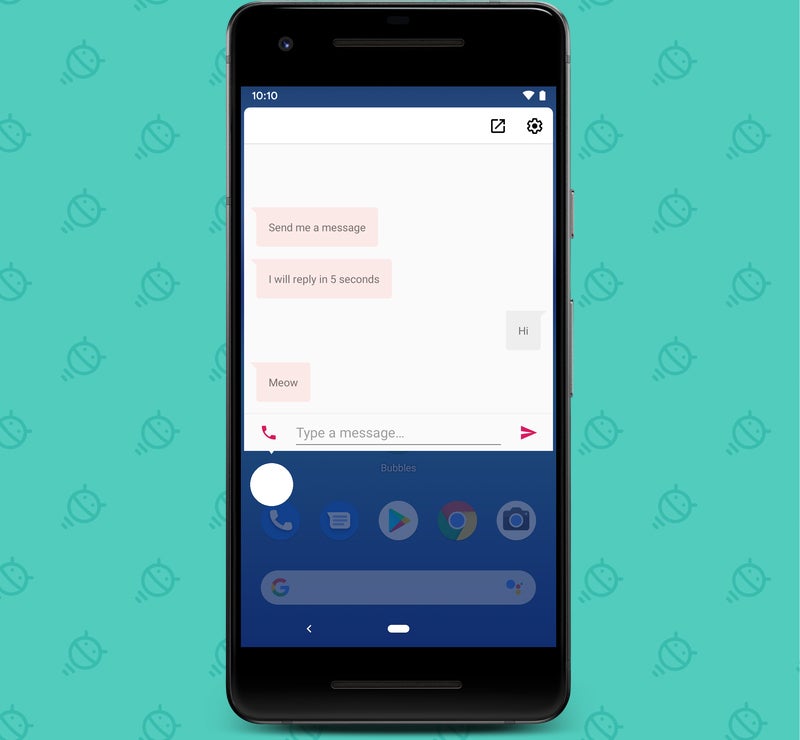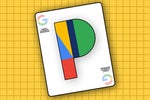I know, I know: According to almost every tech publication out there, this week is all about Magical and Revolutionary Things™ in the iOS universe. But let's set aside the superlative-slinging wizard-wand for a moment — 'cause here in the land o' Android, we've got some serious thinking to do.
We're nearly two weeks into the release of Google's Android 11 Beta, y'see, and I can't help but obsess a bit over what this software suggests could — or at least should — come next. (And just think: If Google does in fact move forward with what I'm proposing, iPhone users can expect to see the same exact thing added to iOS in another five years! Hey-oh!)
At this point, as I laid out in a recent newsletter, Android 11 strikes me as coming down to three main themes: smarter privacy, smarter messaging, and smarter controls for the ways we interact with media and devices. The privacy part is arguably the most important, but the more I've lived with the messaging changes, the more I've come to appreciate how meaningful they are — and the more I've come to contemplate what other improvements they could pave the way for in a future release.
The Android messaging mashup: Part I
Before we dive into the future, let's do a quick recap of the present: Android 11, in case you haven't been paying attention, has a couple of noteworthy new communication-related touches — both of which seem relatively inconsequential on the surface but start to show their value as you actually use 'em and experience their effect in the real world.
First is a revamp of the Android notification panel in which conversation-related notifications — from any app or service — get separated out into their own special section at the top. Then, for any alert that shows up in that section, you can press and hold the notification to easily set its sender as a priority-level person.
 JR
JR Doing so pins that person's notifications to the top of the Conversations section and causes their profile photo to appear as its own separate icon within your status bar whenever a notification from them is present. And here's the key part of all of this: Everything looks and acts the same, no matter what app or service is involved.
 JR
JR The second new element is the presence of Bubbles, a multitasking system we first heard about back in the Android 10 development era and are just now seeing in action for the first time. This part isn't totally up and running just yet, as hardly any apps are set up to support it yet — but once developers get on board with the system, it'll let you tap a special icon within any conversation-related notification to pop that conversation out into a floating window. The window then stays on top of whatever else you're doing and can be collapsed down into a small floating circle for easy ongoing access.
 Google
Google So here's how this all comes together in practice and why I'm talking your ear off about it: The effect of these various pieces is that messaging on Android is starting to feel more consistent and connected — less like juggling conversations from a dozen different apps and more like interacting with a streamlined communication environment on the operating system level.
Especially considering how many different messaging platforms most of us have to contend with these days (not to mention all the messaging apps Google itself is launching and repositioning every four to six hours), having a centralized place to manage all of your ongoing threads makes a world of difference. And between the new Conversations section itself and the Bubbles interface popping out of it, chatting really is becoming more of an Android experience, even when a bunch of different apps and platforms are involved.
But hold the phone — 'cause there's a serious limitation: All of this works only when you're dealing with incoming conversations that are already underway — ones for which notifications are already present. When you want to start a new conversation with someone, you still have to think about which service you use to talk to that person and then do the classic app-hopping dance.
It's a smart bit of streamlining, in other words, but it's only half the picture — and especially when you see how heavily Google is emphasizing the idea that Android 11 is meant to make the operating system more "people-centric, not platform-centric," putting "people at the heart of the experience for Android" and "reimagin[ing] the way we have conversations on our phones," it's hard not to feel like this is only the beginning.
And it's hard not to hope Android 12 will finish what Android 11's begun.
The next phase of Android messaging
So here's what this is all building up to: With Android 11 making replying to and interacting with existing conversations a consistent, platform-agnostic experience, Android 12 needs to pick up where that leaves off and do the same thing for new conversations.
And for a model of what that could look like, we need to look no further than a few years back in smartphone history — to a company just outside of Google's orbit.
Back when Microsoft was still developing its own smartphone operating system (and not yet building up a business within Google's Android world), its Windows Phone software had an intriguing element — a messaging hub that, yup, brought different messaging platforms together into a single streamlined experience.
The Windows Phone messaging hub "blurred the lines" between different communication platforms, as one reviewer put it at the time — letting you "focus on the people rather than having to choose" a specific service and then switch over to that app. It wasn't perfect and it certainly had its share of limitations, but the idea behind it was solid — and almost a spot-on complement to what Google's giving us right now.
Imagine a system-level Android app that collected contact info from a variety of different platforms and pulled 'em into a single place, then let you go to that one hub to initiate conversations with people across any of the connected services. Combine that with the Conversations section and Bubbles system Android 11 brings into the equation, and you'd have a complete system for doing exactly what Google's describing — for making Android "people-centric, not platform-centric," for putting "people at the heart of the experience for Android," and for "reimagin[ing] the way we have conversations on our phones."
It would finish what Android 11 started, and it'd give Android a huge leg up on that other mobile operating system when it comes to communication. (Well, it'd give it that leg up for a few years, anyway, until Apple emulated the exact same thing in 2026 and touted it as a "revolutionary new innovation.")
The funny thing is that Google actually almost did this nine years ago — or started to think about it, at least. Remember this? With 2011's Android 4.0, Ice Cream Sandwich release, Google debuted a highly touted new system for "integrat[ing] rich social communication and sharing touchpoints across the system, making it easy to talk, email, text, and share."
As Google put it at the time:
Throughout the system, a user’s social groups, profiles, and contacts are linked together and integrated for easy accessibility. At the center is a new People app that offers richer profile information, including a large profile picture, phone numbers, addresses and accounts, status updates, events, stream items, and a new button for connecting on integrated social networks.
That People app never progressed to the point of being a true multiplatform messaging hub — and Google, being Google, quietly phased it out without explanation a few years after its splashy debut. The core idea was there, though; it just never had the chance to evolve and turn into something useful.
 Google
GoogleWith that same "people-centric" approach coming back around now with Android 11, it seems like the perfect opportunity to revive the People app concept and turn Android into a true people-centric, platform-combining operating system — one where communication is an OS-level feature instead of a mishmosh of overlapping apps. It'd be a technical challenge to make happen, I'm sure, and probably a bit of logistical nightmare. If Google were able to pull it off, though, it'd be an incredible feat and a powerful productivity advantage.
Android 11 takes the first step in transforming a disparate forest of app-controlled actions into a connected and consistent part of the Android experience. Now Google just needs to complete that thought and fill in the rest of the picture. And from Microsoft's work with Windows Phone to Google's own unfinished ideas with Android, it doesn't have to look far to find the exact right form of inspiration.
And now for something completely different: Find out more about the squabble over Android to iPhone texting.
Sign up for my weekly newsletter to get more practical tips, personal recommendations, and plain-English perspective on the news that matters.

[Android Intelligence videos at Computerworld]



























































































